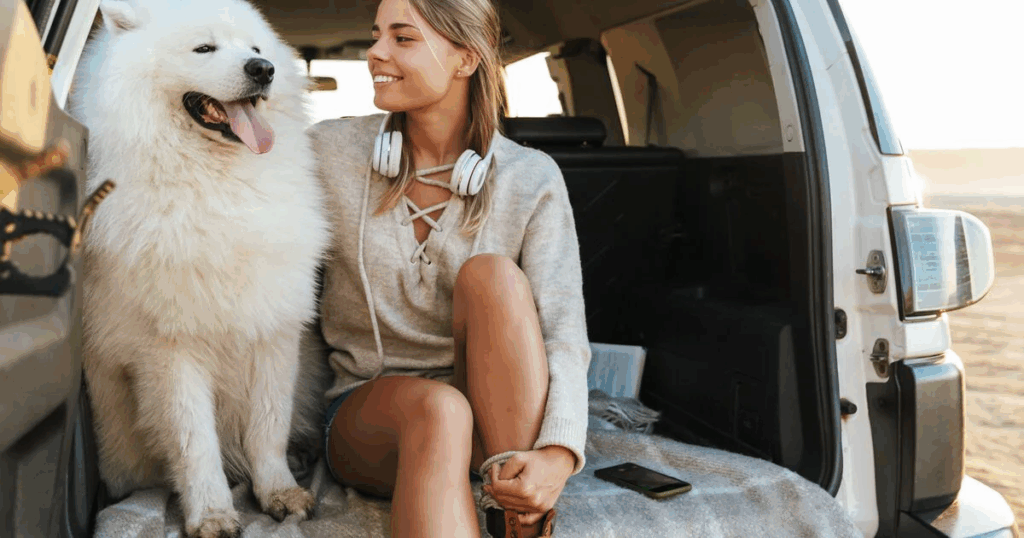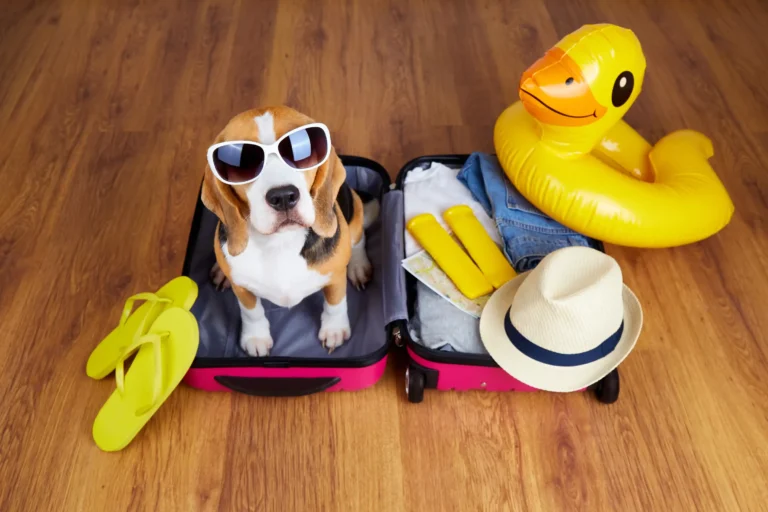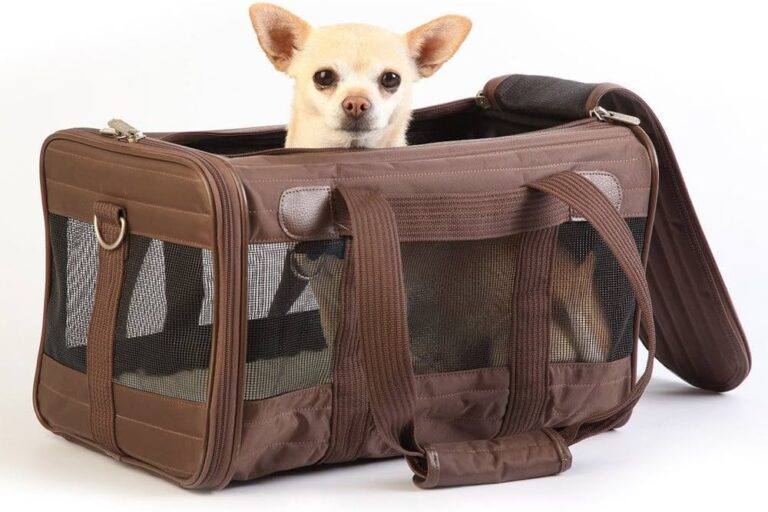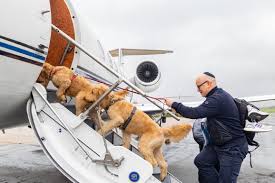Planning a road trip with your furry friend? If the thought of a long car journey with your small dog sends them into a frenzy, fear not. Our comprehensive guide, “Calm Canine Commutes: Top Tips for Keeping Your Small Dog Relaxed on Long Journeys”, is packed with expert advice to help put your pet at ease.
Navigating the open road with your petite pup should be an enjoyable experience for both of you. Unfortunately, it can often become stressful due to the unfamiliar environment and lengthy duration. We’re here to change that. This guide will delve into understanding your dog’s travel anxiety and present proven methods to manage it effectively.
In this comprehensive guide, we will explore a range of practical techniques to keep your small dog calm during long car rides. These include tips on preparing your dog for travel, creating a comfortable space in your vehicle, and the use of calming aids. Furthermore, we will investigate how to safely secure your dog in the car and the importance of taking regular breaks.
Additionally, we’ll offer advice on understanding your small dog’s behaviour during travel and how to respond appropriately. Recognising signs of stress in your dog can go a long way in making the journey more pleasant. It’s not just about keeping them physically comfortable; it’s equally crucial to cater to their emotional needs.
In conclusion, this guide promises to be a valuable resource for any small dog owner planning a long journey. Our expert tips and advice will make travel more enjoyable for your little canine companion. So buckle up and prepare for a relaxed and stress-free journey with your small dog. Let’s make your next road trip, a calm canine commute.
Understanding Your Dog’s Travel Behavior
Understanding the travel behavior of your small dog is the first step towards a calm canine commute. Dogs, like humans, have their own personalities and behavior patterns. They can be adventurous, shy, nervous, or relaxed. Some dogs enjoy car rides while others find them stressful.
An anxious dog might exhibit signs such as excessive salivation, pacing, barking, or even vomiting. It is essential to recognize these signs and address them promptly. Long term, unchecked stress can lead to more serious health problems like depression and immune system suppression.

Behavior Modification Techniques
Behavior modification techniques can help alleviate travel anxiety in dogs. Desensitization is one such technique. This involves gradually exposing the dog to the stressor – in this case, car travel – and rewarding them for remaining calm. Start with short journeys and gradually increase the duration.
Counter-conditioning is another technique. This involves changing the dog’s emotional response to the stressor. For example, you might start feeding your dog their favorite treats only in the car. Over time, the dog will associate car travel with positive experiences.
Creating a Comfortable Travel Environment
Creating a comfortable travel environment can go a long way in keeping your small dog relaxed on long journeys. The interior of the car should be well-ventilated and the temperature should be regulated. The use of a dog car seat or a travel crate can also help. These provide a secure space for your dog and can also prevent motion sickness.
Travel Essentials for Small Dogs
- Travel Crate or Car Seat: This provides a secure space for your dog. Choose one that is appropriately sized and well-ventilated.
- Water and Food: Always carry fresh water and food for your dog. Consider using a non-spill travel bowl.
- Chew Toys: These can help keep your dog occupied and reduce anxiety.
- Comfort Items: Familiar items such as a blanket or a favorite toy can provide comfort and reduce stress.
- First Aid Kit: A pet-specific first aid kit is essential. This should include items like bandages, tweezers, and a digital thermometer.
Importance of Health Screening Before Travel
Before setting off on a long journey, ensuring that your small dog is in good health is crucial. A pre-travel veterinary check-up can help detect any underlying health conditions that might complicate the trip. This is especially important for small dog breeds, as they can sometimes be more sensitive to changes in environment, temperature, and routine. A full examination will allow the vet to assess your dog’s heart, lungs, joints, and overall physical health.
If your dog has pre-existing conditions such as heart disease, respiratory problems, or arthritis, additional precautions may need to be taken. In some cases, your veterinarian might advise against travel if the health risks outweigh the benefits.
Essential Vaccinations and Preventative Care
Vaccinations are a fundamental part of preparing your dog for travel. Even if your trip is domestic, ensuring that your dog’s vaccinations are up-to-date protects them from common contagious diseases. Core vaccinations typically include rabies, parvovirus, distemper, and adenovirus.
If your journey will take you across state lines or into another country, additional vaccines may be required. For example, vaccines against Bordetella (kennel cough), leptospirosis, and Lyme disease may be recommended depending on your destination and the activities you have planned.
Besides vaccinations, preventative care such as flea, tick, and heartworm prevention should be maintained consistently. Traveling exposes your dog to different environments where parasites are prevalent, so keeping up with preventative treatments is essential.
Addressing Motion Sickness in Small Dogs
Motion sickness is a common concern for many small dogs during car travel. The symptoms can vary from mild uneasiness to severe vomiting and distress. Dogs that are not used to traveling in vehicles are more prone to experiencing these symptoms.
To help manage motion sickness, avoid feeding your dog right before travel. A light meal several hours before departure is usually best. Keeping the car well-ventilated and allowing your dog to look out of the window can sometimes reduce symptoms.

In cases of persistent motion sickness, consult your veterinarian. They may prescribe anti-nausea medications specifically formulated for dogs. Always administer medications exactly as directed and conduct a trial run before the actual trip to ensure your dog tolerates the treatment well.
Dealing with Heat and Cold Stress
Extreme temperatures can be hazardous for small dogs during travel. Small breeds, particularly brachycephalic breeds like Pugs and French Bulldogs, are highly susceptible to heatstroke. Never leave your dog unattended in a parked vehicle, even for a few minutes, as temperatures can rise dangerously fast.
On the other hand, cold weather also presents risks. Small dogs often have thinner fur and less body fat, making them more vulnerable to hypothermia. Ensure your dog is warm enough during travel by providing cozy bedding, and if necessary, a pet sweater or jacket.
Maintaining a moderate, comfortable temperature inside the car at all times is critical. Regularly check on your dog during the journey to ensure they are neither overheating nor shivering.
Hydration and Nutrition During Travel
Keeping your dog hydrated during travel is vital. Dehydration can lead to serious health problems, especially during long trips. Bring a sufficient supply of clean water and offer it at regular intervals. Portable water bottles with attached bowls make this process easy and mess-free.
When it comes to nutrition, it is best to stick to your dog’s regular diet. Avoid introducing new foods right before or during the trip, as dietary changes can upset their stomach. Pack enough of their regular food for the entire duration of the trip and bring a few extra meals in case of delays.
Treats can be used to reward good behavior during the journey but should be given sparingly to avoid causing nausea.
Managing Anxiety and Behavioral Issues
Travel can be stressful for small dogs, leading to anxiety and undesirable behaviors such as barking, whining, or destructive chewing. Identifying signs of anxiety early can help you intervene before the behavior escalates.
Using positive reinforcement techniques, you can encourage calm behavior in the car. Give treats, affection, or verbal praise when your dog remains quiet and relaxed. If anxiety is severe, talk to your veterinarian about safe calming aids, such as pheromone sprays, calming collars, or prescribed anti-anxiety medications.
Training your dog to associate car rides with positive experiences can significantly improve their behavior. Short, pleasant trips to parks or favorite locations can help change their perception of car travel.
Setting Up a Safe and Comfortable Car Space
Creating a designated travel area for your dog within the vehicle improves both safety and comfort. Car seats for small dogs or crash-tested travel crates are ideal for securing your pup during the ride.
Make the space cozy with familiar blankets, bedding, and a few favorite toys. This familiar environment helps reduce anxiety and discourages your dog from roaming freely in the vehicle, which could be dangerous.
Avoid placing the carrier where direct sunlight can overheat your dog, and always ensure good airflow around their space.
Planning Regular Breaks and Exercise
On long journeys, it is crucial to plan for regular stops. Small dogs need frequent bathroom breaks, opportunities to stretch their legs, and mental stimulation to avoid boredom and restlessness.
Ideally, stop every two to three hours for a quick walk and water break. Bring a sturdy leash and harness for safe walks during pit stops. Allowing your dog to sniff around and explore new environments helps burn off excess energy and reduces overall travel stress.
Incorporating breaks into your travel itinerary will make the journey more pleasant for both you and your small dog.
First Aid Essentials for Travel
Having a well-stocked first aid kit for your dog can make a significant difference in an emergency. Your travel pet first aid kit should include:
- Gauze and non-stick bandages for minor wounds
- Tweezers for tick removal
- Antiseptic wipes
- Styptic powder to stop minor bleeding
- A digital thermometer
- Medications prescribed by your vet
- Emergency veterinary contact information
Familiarize yourself with basic first aid techniques, such as how to handle choking or what to do if your dog shows signs of heatstroke or hypothermia.
Researching Veterinary Services at Your Destination
Before you arrive at your destination, research local veterinary clinics or emergency hospitals nearby. Knowing where to go in case of an emergency can save valuable time and potentially save your dog’s life.
Many apps and websites provide directories of veterinarians around the country, some even indicating 24-hour services. Save this information on your phone and keep a hard copy with your travel documents.
Emergency Evacuation Plans
While unlikely, it is wise to have a basic plan in case you need to evacuate quickly from your vehicle or accommodation. Always know the fastest exit routes and have your dog’s travel crate, leash, and essential supplies easily accessible.
Practicing quick entries and exits from the car with your dog can prepare you for unexpected situations and ensure your pup remains safe and under control.
Conclusion
In conclusion, ensuring a calm and stress-free journey for your small dog is absolutely achievable with the right preparation, patience, and a thoughtful approach. Creating a familiar and comfortable environment with a well-fitted carrier, favorite toys, cozy blankets, and familiar scents can significantly reduce travel anxiety. Offering positive reinforcements, such as treats and verbal praise, during the journey can further encourage calm behavior and make the experience more enjoyable for your pet.
Including regular pit stops every few hours for stretching, hydration, and bathroom breaks is essential for maintaining your dog’s physical comfort and mental well-being. Providing small, healthy snacks and ensuring access to fresh water throughout the journey will keep your dog nourished and properly hydrated. Maintaining an optimal, consistent temperature inside the vehicle is equally crucial to avoid heat exhaustion or cold stress, particularly for smaller breeds that are more vulnerable to environmental extremes.
Additionally, gradually conditioning your dog with a series of short, positive car rides before embarking on a long journey is a highly effective strategy for a successful travel experience. Short practice trips help your dog become familiar with the sensations and routine of car travel, minimizing the likelihood of stress or motion sickness on longer trips.
It is important to always remember that every dog is unique, and what works for one may not be suitable for another. Being attentive to your dog’s individual needs and adjusting the journey based on their comfort levels will make a significant difference. Consulting your veterinarian for advice on health checks, calming aids, and specific travel recommendations can be invaluable, especially for dogs with a history of anxiety or medical issues.
By implementing these proactive and compassionate practices, you can transform travel into a safe, relaxed, and rewarding adventure for both you and your beloved small companion. With the right mindset and careful planning, every road trip can become an opportunity to create cherished memories together. Happy travels and may every journey be as joyful as the destination!



